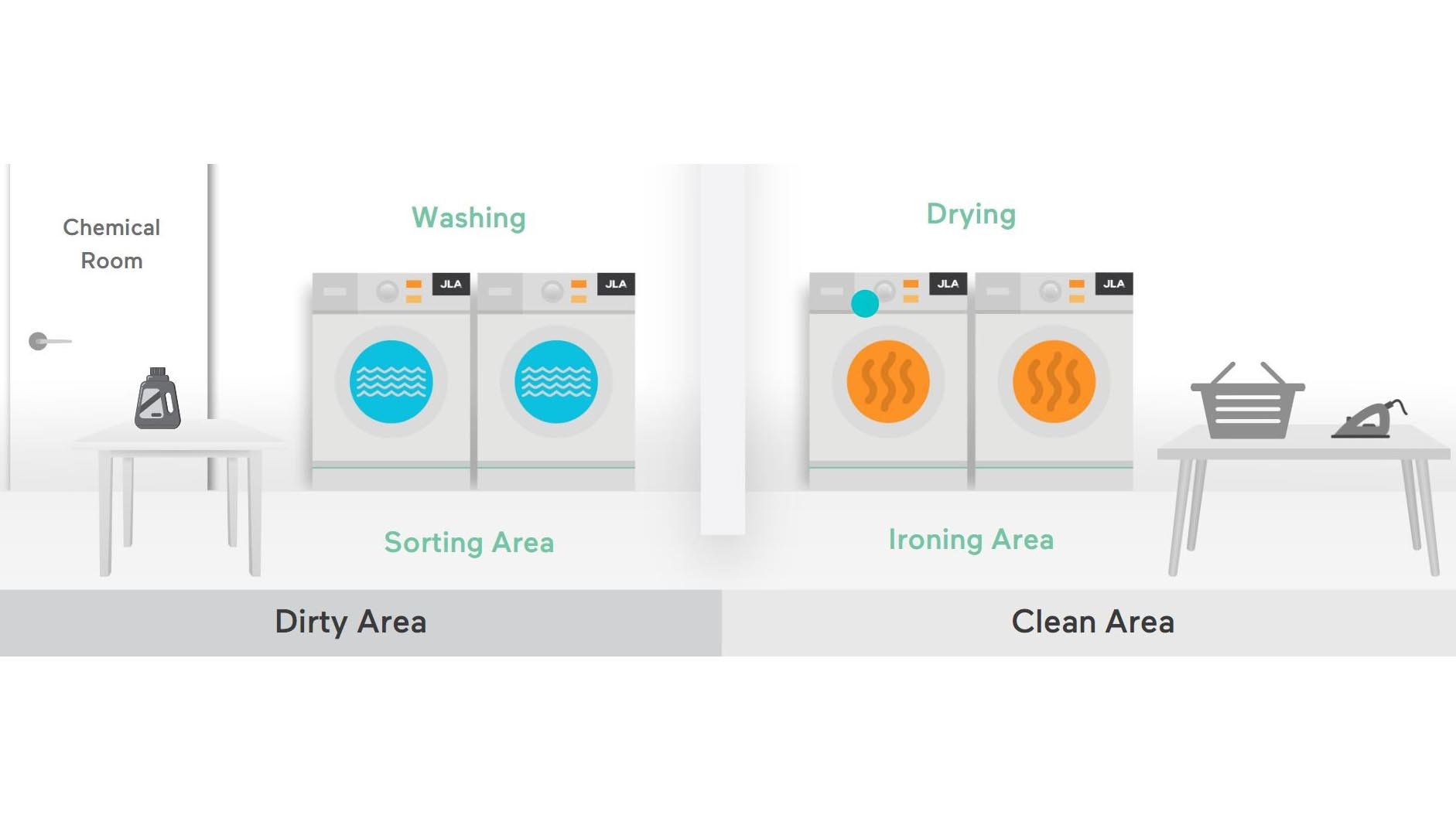How to reduce contamination in healthcare laundry rooms
For health and social care organisations, laundry best practices go beyond basic cleaning and stain removal.
The safe and efficient cleaning of contaminated laundry is vital in such settings – with a swathe of guidelines in place to safeguard and maintain hygiene standards.
Of course, the success of commercial laundry equipment processes in hospitals and similar healthcare facilities hinges on a range of factors – from the training of key personnel to the equipment available and even the layout of the room itself. As such, there is often room for improvement, which is why we’ve put together this essential guide on reducing the risk of contamination in healthcare laundries.
Hospital laundry layout: The importance of ‘dirty’ and ‘clean’ areas
In hospitals, care homes and other healthcare facilities, it’s vital that infected linens are kept separate from clean, freshly laundered items. And there is no space for half measures here; your laundry must have designated areas for ‘dirty’ and ‘clean’ garments to come in and out with no risk of cross-contamination.
‘Dirty’ laundry zones are where garments and linens enter the facility before they’re sorted and washed by trained personnel wearing the correct PPE. ‘Clean’ areas, meanwhile, are designated spaces for drying and ironing clean items before they’re returned to circulation.
The process of sorting and storing contaminated laundry
If your facility handles a lot of contaminated laundry, you’ll need safe and consistent processes in place to sort and store infected items before they can be laundered.
Utilising the FIFO approach of first in, first out, any heavily soiled or infected items should be handled as a priority, reducing the likelihood of cross-contamination. Of course, personnel must also ensure that items are sorted by colour and garment type, with infected items placed in red bags to make ensure they’re easy to identify.
Maintaining hygiene in a healthcare laundry washing area
The area where your commercial washing machines and professional tumble dryers operate is the focal point of your laundry facility, and also the place where cross-contamination is most likely to occur. As such, it’s vital that OSHA guidelines for laundry in healthcare facilities are followed to the letter in this zone, ensuring that contaminated and clean items are kept completely segregated with no chance of cross-contamination.
The value of barrier washing machines in a hospital laundry facility
Since contaminated items must be kept separate from clean garments in healthcare laundries, the easiest way to achieve this during the wash cycle is by using a barrier washing machine.
Barrier washers feature two doors and two entry and exit points, effectively allowing you to place contaminated items in one side and bring clean linens out of another. The physical partition afforded by these industry-standard machines makes them indispensable appliances for maintaining peak hygiene standards in health and social care laundry facilities.
How does OTEX technology improve hygiene standards in healthcare facilities?
Removing germs and bacteria is important in all commercial laundries, but doubly so in healthcare settings. As such, investing in a barrier washing machine with in-built OTEX cleaning capabilities provides a reliable means of reducing harmful bacteria, even at trace levels.
OTEX is our patented aqueous ozone disinfection system that is capable of killing 99.9% of germs during standard laundry cycles. It’s an effective alternative to traditional thermal disinfection, removing all traces of harmful micro-organisms that may be present in heavily soiled and contaminated laundry.
We hope this guide has offered some food for thought on how to improve processes and reduce the risk of contamination in your laundry facility. If you feel it’s time to upgrade your equipment and rethink your healthcare laundry setup, contact JLA today.



















